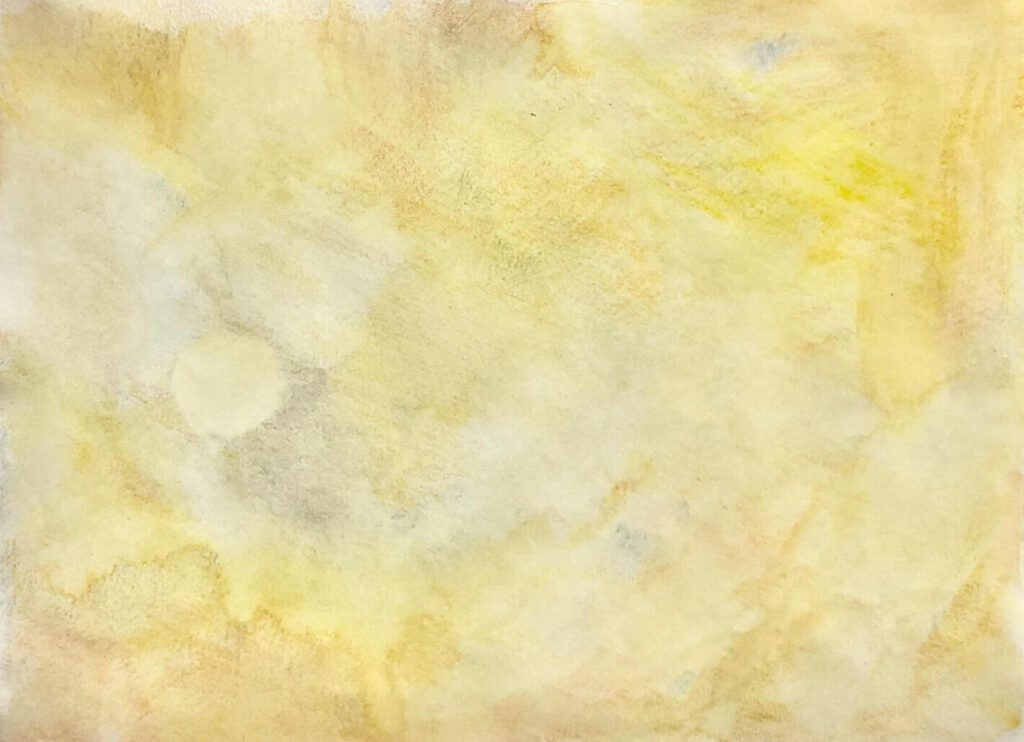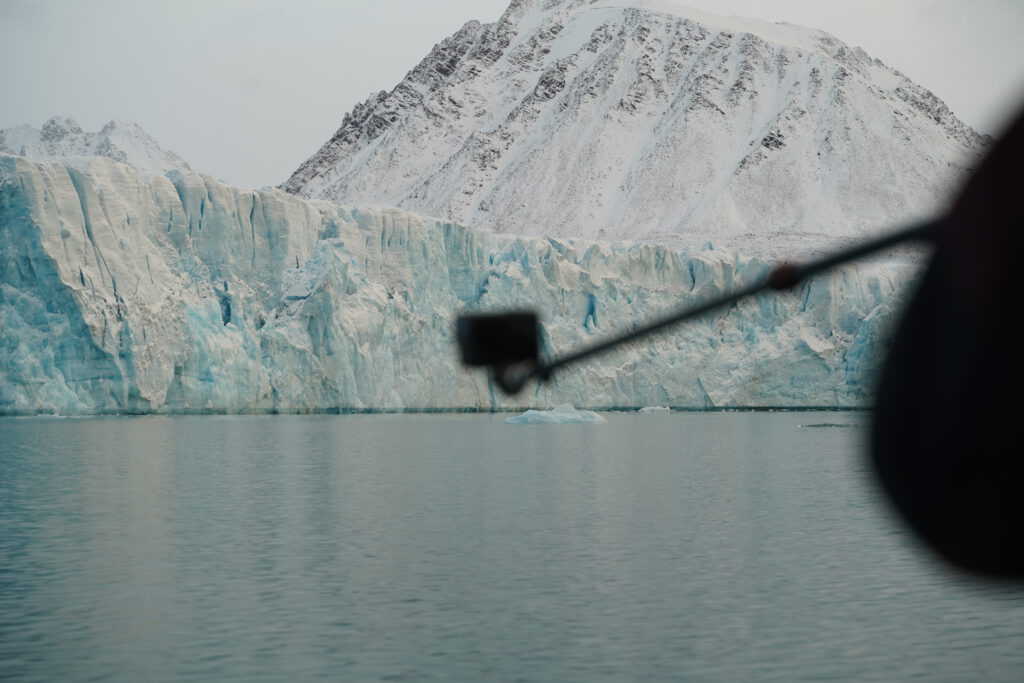
the sun, or how to remember a blue sky?
watercolor and pencil on paper,
25 x 45 cm
2022
Creating a cooling effect on earth by injecting aerosols in the stratosphere is becoming one possible tool of geoengineering to face global warming. The particles have to be spread regularly, they would move and carry with the directions of the high winds and currents across the globe. They do not stop at national borders, they can hardly be controlled and condemned in the high stratosphere. Due to the difficulties in modeling their impact on the climate system, the efficiency of the technique is not predictable and remains theoretical until the urgency of climate crises pushes for any implementation of solar geoengineering. But who will decide for the moment when the crisis becomes urgent enough to use a technique of this scale? While the Global South suffers in the first place under the consequences of global warming, the industrial nations will still not fulfill the Paris Agreement. Collective decision-making processes become even more important when we think about the unpredictable consequences of one single country using aerosols to change the appearance of the sky. We can consider, for instance, that particles which are naturally let free from a volcano eruption would shield the sun in a larger scale for an uncertain period and turn the sky into shades of dust.
The first time I read about solar radiation modification it was winter in Lisbon, in the beginning of 2022. During these days, large amounts of sand from the Sahara area was carried by winds towards the north, setting Europe almost entirely in a yellow subdued light for a couple of days. In a place with more than 300 days of blue sky per year, the mysterious yellow in the air radically shifted my perception of the environment. Facing the yellow fog, the natural event resonated with my research about solar engineering which would also diffuse the shades of light. By blending thoughts of sahara sand and this very geo gesture I was longing for the blue sky to appear.
